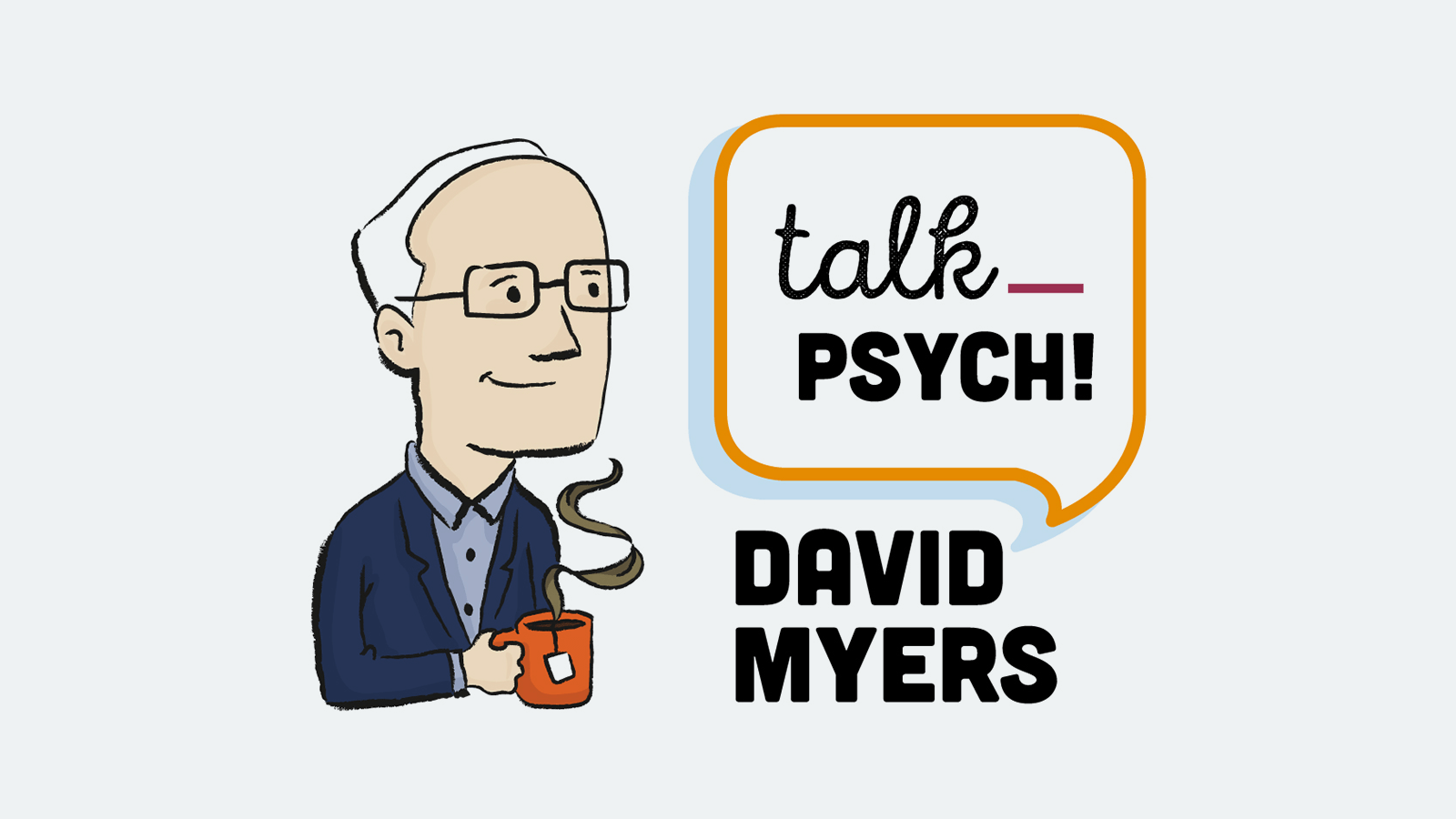-
About
Our Story
back- Our Mission
- Our Leadershio
- Accessibility
- Careers
- Diversity, Equity, Inclusion
- Learning Science
- Sustainability
Our Solutions
back
-
Community
Community
back- Newsroom
- Webinars on Demand
- Digital Community
- The Institute at Macmillan Learning
- English Community
- Psychology Community
- History Community
- Communication Community
- College Success Community
- Economics Community
- Institutional Solutions Community
- Nutrition Community
- Lab Solutions Community
- STEM Community
- Newsroom
- Macmillan Community
- :
- Psychology Community
- :
- Psychology Blog
Psychology Blog
Options
- Mark all as New
- Mark all as Read
- Float this item to the top
- Subscribe
- Bookmark
- Subscribe to RSS Feed
Psychology Blog
Showing articles with label Gender and Sexuality.
Show all articles
Expert
08-03-2024
08:12 AM
I’m a fan of infusing research methods throughout the Intro Psych course. We introduce psychology’s most common research methods early in the course, but we should revisit them every now and again in the context of psychology’s content to help make them stick. Think spacing effect. First, a note on getting journal articles. For college and university faculty, accessing journal articles through their library’s databases is usually a pretty easy process. If your library doesn’t have it, you can request it through interlibrary loan (ILL). For high school teachers, getting research articles can be challenging. Some journals will make some articles freely available. Some authors make their articles freely available to download via ResearchGate. You will need a ResearchGate account, but it is free to join. Other authors—or the same authors, but different journal articles—will give you the option to contact them via ResearchGate for a copy of their article. If the author isn’t on ResearchGate, email them directly to ask for a copy of their article. Provide a full citation. Researchers may publish several articles on the same topic in the same year. Wherever you find an abstract, you can often find the email address of the lead author. If you can’t find the email address, you can usually find their affiliation. An Internet search of their name and affiliation will usually yield a page at their institution that includes an email address. Do not ever feel shy about contacting researchers to request a pdf of an article or to ask questions about their research. The vast majority of researchers, frankly, are thrilled to learn that someone is interested in their research. I’m not kidding. Interlibrary loan (ILL) may be another option for you. Ask your public library librarians if they do ILL for journal articles. Also, don’t be afraid to ask your friends who are college or university faculty. Just be sure to rotate your requests through your network. You don’t want to wear out your welcome with one person with a single request for a dozen articles! Finally, be aware that some of the classic case studies discussed in Intro Psych textbooks are not good examples, such as Phineas Gage. “Recent historical work, however, suggests that much of the canonical Gage story is hogwash, a mélange of scientific prejudice, artistic license, and outright fabrication,” writes one of my favorite science writers, Sam Kean (Kean, 2014). (If you have not yet read Kean’s book The Tale of the Dueling Neurosurgeons, I highly recommend it. Kean dives into each major area of the brain, discussing both its history and current research.) Below are some case study examples, organized by pillar (Gurung et al., 2016). As with all research articles, you don’t have to understand every word to get the point. That’s probably a message worth communicating to our students. Researchers write journal articles for other researchers who are doing research in their same area. They are not writing for a general audience. Even researchers who work in other areas of the field may not grasp every word. And that’s okay! If you can get enough of the big picture to share the research with students—even if it’s in broad strokes—you are good to go. Here's an example of where I needed help with the big picture. I wrote a blog post recently on how the mapping of the motor cortex that we’ve taught for decades is wrong (Frantz, 2024). It was based on fMRI findings researchers published in the journal Nature (Gordon et al., 2023); the article is freely available. The lead author, Evan M. Gordon, is a radiologist at the Washington University School of Medicine. I am absolutely certain radiologists would understand just about every word in that article. I, however, am not a radiologist. I’m not even a biopsychologist; my background is in social psychology. With a rudimentary understanding of biology, however, I could grasp most of the article, but there were places where I struggled enough that I could not quite see the big picture. So, I did the only reasonable thing. I emailed Gordon. He replied very quickly—and graciously. It took an exchange of just a few emails for me to get it. The result was that blog post. Biological Stevens, J. A., Cole, W. G., & Vishton, P. M. (2012). Using touch or imagined touch to compensate for loss of proprioception: A case study. Neurocase, 18(1), 66–74. https://doi.org/10.1080/13554794.2011.556124. [Download full text via ResearchGate.] Feinstein, J. S., Adolphs, R., Damasio, A., & Tranel, D. (2011). The human amygdala and the induction and experience of fear. Current Biology, 21(1), 34–38. https://doi.org/10.1016/j.cub.2010.11.042. [Full text available.] Tuckute, G., Paunov, A., Kean, H., Small, H., Mineroff, Z., Blank, I., & Fedorenko, E. (2022). Frontal language areas do not emerge in the absence of temporal language areas: A case study of an individual born without a left temporal lobe. Neuropsychologia, 169, 108184. https://doi.org/10.1016/j.neuropsychologia.2022.108184. [Download full text via ResearchGate.] Cognitive Linden, M. V. (1996). Semantic memory and amnesia: A case study. Cognitive Neuropsychology, 13(3), 391–414. https://doi.org/10.1080/026432996381953. [Download full text via ResearchGate.] Gould, C., Froese, T., Barrett, A. B., Ward, J., & Seth, A. K. (2014). An extended case study on the phenomenology of sequence-space synesthesia. Frontiers in Human Neuroscience, 8. https://doi.org/10.3389/fnhum.2014.00433 [Download full text.] Developmental Kocabaş-Gedik, P., & Ortaçtepe Hart, D. (2021). “It’s not like that at all”: A poststructuralist case study on language teacher identity and emotional labor. Journal of Language, Identity & Education, 20(2), 103–117. https://doi.org/10.1080/15348458.2020.1726756 [Request full text from the authors via ResearchGate.] Nelis, P., Pedaste, M., & Šuman, C. (2023). Applicability of the model of inclusive education in early childhood education: A case study. Frontiers in Psychology, 14, 1120735. https://doi.org/10.3389/fpsyg.2023.1120735 [Download full text.] Social & Personality Herrick, S. S. C., Rocchi, M. A., & Couture, A. L. (2020). A case study exploring the experiences of a transgender athlete in synchronized skating, a subdiscipline of figure skating. Journal of Sport and Social Issues, 44(5), 421–449. https://doi.org/10.1177/0193723520919816. [Request full text from the authors via ResearchGate.] Ferguson, D., & Martin-Dunlop, C. (2021). Uncovering stories of resilience among successful African American women in STEM. Cultural Studies of Science Education. https://doi.org/10.1007/s11422-020-10006-8. [Request full text from the authors via ResearchGate.] Leporelli, E., & Santi, G. (2019). From psychology of sustainability to sustainability of urban spaces: Promoting a primary prevention approach for well-being in the healthy city designing. A waterfront case study in Livorno. Sustainability, 11(3), 760. https://doi.org/10.3390/su11030760. [Download full text via ResearchGate.] Hu, X., Sidhu, G. K., & Lu, X. (2022). Exploring positive psychology factors in the quality of English as a foreign language classroom life: A case study. Environment-Behaviour Proceedings Journal, 7(22), 17–22. https://doi.org/10.21834/ebpj.v7i22.4153. [Download full text via ResearchGate.] Mental & Physical Health Black, Z. A., & McCarthy, P. (2020). A case study of a trainee sport psychologist adopting a person-centred approach with a professional basketball player. Sport & Exercise Psychology Review, 16(2), 74–83. https://doi.org/10.53841/bpssepr.2020.16.2.74. [Author’s accepted manuscript.] Borg, M. B. (2002). The Avalon Gardens Men’s Association: A Community health psychology case study. Journal of Health Psychology, 7(3), 345–357. https://doi.org/10.1177/1359105302007003226. [Request full text from the author via ResearchGate.] Blackwell, S. E., & Holmes, E. A. (2017). Brightening the day with flashes of positive mental imagery: A case study of an individual with depression. Journal of Clinical Psychology, 73(5), 579–589. https://doi.org/10.1002/jclp.22455. [Download full text.] References Frantz, S. (2024, July 20). The classic motor cortex map is wrong. Macmillan and BFW Teaching Community. https://community.macmillanlearning.com/t5/psychology-blog/the-classic-motor-cortex-map-is-wrong/ba-p/21746 Gordon, E. M., Chauvin, R. J., Van, A. N., Rajesh, A., Nielsen, A., Newbold, D. J., Lynch, C. J., Seider, N. A., Krimmel, S. R., Scheidter, K. M., Monk, J., Miller, R. L., Metoki, A., Montez, D. F., Zheng, A., Elbau, I., Madison, T., Nishino, T., Myers, M. J., … Dosenbach, N. U. F. (2023). A somato-cognitive action network alternates with effector regions in motor cortex. Nature, 617(7960), 351–359. https://doi.org/10.1038/s41586-023-05964-2 Gurung, R. A. R., Hackathorn, J., Enns, C., Frantz, S., Cacioppo, J. T., Loop, T., & Freeman, J. E. (2016). Strengthening Introductory Psychology: A new model for teaching the introductory course. American Psychologist, 71(2), 112–124. https://doi.org/10.1037/a0040012 Kean, S. (2014, May 7). Phineas Gage, neuroscience’s most famous patient. Slate. https://slate.com/technology/2014/05/phineas-gage-neuroscience-case-true-story-of-famous-frontal-lobe-patient-is-better-than-textbook-accounts.html
... View more
Labels
1
1
7,223
Expert
04-13-2024
10:06 AM
This is the most horrifying thing I have read in some time: Nearly two-thirds of women in [Indiana University’s Debby Herbenick’s] most recent campus-representative survey of 5,000 students at an anonymized “major Midwestern university” said a partner had choked them during sex (one-third in their most recent encounter). The rate of those women who said they were between the ages 12 and 17 the first time that happened had shot up to 40 percent from one in four [from four years ago] (Orenstein, 2024). Nearly two-thirds of the women at this “major Midwestern university.” Let’s say that your students are no different than these “major Midwestern university” students. Let’s say you have 500 students a year. About 60% of college students are women (National Center for Education Statistics, 2023a). During the 2020-2021 academic year, 80% of bachelor’s degrees went to women (National Center for Education Statistics, 2023b). If you teach mostly Intro Psych, the number of women in your classes may be closer to 60%. If you teach mostly upper division courses for the psych major, the number of women in your classes may be closer to 80%. For illustration purposes, let’s split the difference and say that 70% of your 500 students are women. That means that you teach 350 women each year. If “nearly two-thirds” of those women have been choked during sex, that comes out to 231 of your students. “Nearly” half of your students. Are being choked. Actually, the number is likely higher than that. “[W]hile undergrads of all genders and sexualities in Dr. Herbenick’s surveys report both choking and being choked, straight and bisexual young women are far more likely to have been the subjects of the behavior; the gap widens with greater occurrences” (Orenstein, 2024). Men, too, have been choked, just not in the same numbers. “[W]hile the act is often engaged in with a steady partner, a quarter of young women said partners they’d had sex with on the day they’d met also choked them” (Orenstein, 2024). I had just gotten accustomed to a world where apps like Tinder make it easy for complete strangers to have sex—and that many young people were, indeed, using those apps to do just that. But 25% of the women in those same-day sexual encounters are being choked?! “No wonder that, in a separate study by Dr. Herbenick, choking was among the most frequently listed sex acts young women said had scared them, reporting that it sometimes made them worry whether they’d survive” (Orenstein, 2024). No wonder, indeed. Also, oxygen deprivation is bad for the brain. According to the American Academy of Neurology, restricting blood flow to the brain, even briefly, can cause permanent injury, including stroke and cognitive impairment. In M.R.I.s conducted by Dr. [Keisuke] Kawata [an early researcher on NFL concussions and CTE] and his colleagues (including Dr. Herbenick, who is a co-author of his papers on strangulation), undergraduate women who have been repeatedly choked show a reduction in cortical folding in the brain compared with a never-choked control group. They also showed widespread cortical thickening, an inflammation response that is associated with elevated risk of later-onset mental illness. In completing simple memory tasks, their brains had to work far harder than the control group, recruiting from more regions to achieve the same level of accuracy (Orenstein, 2024). And while we’re here, despite what students might have seen on TikTok, “There is no safe way to strangle someone” (Orenstein, 2024). Believing that there is a safe way to choke would be an Internet fact, not an actual fact (Frantz, 2024). “Among girls and women [Orenstein had] spoken with, many did not want or like to be sexually strangled” (Orenstein, 2024). I guess that’s the good news. But why is it so dang common—and becoming more popular? Here’s where I suggest we turn this article into a class or small group discussion (in person or online) as part of the social psych chapter in Intro Psych. Instructions: Read this New York Times opinion piece of April 12, 2024 titled “The Troubling Trend in Teenage Sex” by Peggy Orenstein, and then answer the following questions. From the article, quote a sentence that illustrates the social pressure women feel to allow choking during sex. Have you seen this social pressure within your own friend group? If so, give an example. From the article, quote a sentence that illustrates the social pressure men feel to engage in choking during sex. Have you seen this social pressure within your own friend group? If so, give an example. From the article, describe how choking during sex became popularized through observational learning, starting with its beginning in porn. The article describes how oxygen deprivation can negatively impact the brain. Identify at least five of those effects. Which one do you find the most concerning? Why? The article suggests language that sexual partners can use to make clear what is okay and what is not okay during sex. What is that language? Consider a friend of yours. Do you believe they would be comfortable saying that to a sexual partner? Why or why not? In BDSM, consent—and the ability to withdraw consent (commonly with a safe word)—is paramount. Is choking someone because you think they want to be choked enough to establish consent? Why or why not? If someone gives their consent to be choked but then decides to withdraw their consent, can they do that if they cannot breathe and are losing consciousness? Why or why not? If someone has not given their consent to be choked, can the person doing the choking be charged with assault? Why or why not? If the person being choked experiences permanent damage to their brain or dies, can the person doing the choking be held liable? Why or why not? What was the most surprising thing you learned from this article? Explain. References Frantz, S. (2024, March 22). “Internet fact or actual fact?” Macmillan and BFW Teaching Community. https://community.macmillanlearning.com/t5/psychology-blog/internet-fact-or-actual-fact/ba-p/19976 National Center for Education Statistics. (2023a). Postbaccalaureate enrollment. Condition of Education. https://nces.ed.gov/programs/coe/indicator/chb National Center for Education Statistics. (2023b). Undergraduate degree fields. Condition of Education. https://nces.ed.gov/programs/coe/indicator/cta/undergrad-degree-fields Orenstein, P. (2024, April 12). The troubling trend in teenage sex. The New York Times. https://www.nytimes.com/2024/04/12/opinion/choking-teen-sex-brain-damage.html
... View more
Labels
-
Gender and Sexuality
-
Social Psychology
0
0
9,212
Expert
04-16-2019
10:00 PM
A couple years ago, I wrote a blog post about how to use The Gender Unicorn to help students understand the differences between gender identity, gender expression, sex assigned at birth, physical attraction, and emotional attraction. Through this activity, students can begin to grasp the complexity of sex, gender, and attraction. Matt Goldenberg, through the Society for the Teaching of Psychology Facebook group, posted this 4-minute video that provides a nice introduction to a deeper discussion and The Gender Unicorn. (The recording is audio-described for the visually impaired and captioned for the hearing impaired.) Before showing the video, ask students to work in pairs or small groups to describe the ways in which people express their gender. In other words, when you see someone, how do you know what gender, if any, that person identifies with? Or, how do parents show the gender of their infants? Ask students to volunteer what they came up with; record these where students can see them. If you have time, ask students to consider how the concept of gender differs across cultures. This article from Independent Lens includes a map of places around the world that look at gender differently than people do in the West. Click on each pin to learn more. After watching the recording and discussing gender across cultures, launch The Gender Unicorn activity. A quick note about terminology. The prefix “cis” is Latin for “on the same side of;” and “trans” is Latin for “on the other side of.” For those who identify as cisgender, the gender they were assigned at birth and the gender they identify with now are in agreement—they’re on the same side. For those who identify as transgender, the gender they were assigned at birth and the gender they identify with now are in disagreement—they’re on different sides. This language is misleading because there really aren’t any sides. Those who identify as non-binary are saying that they don’t identify themselves according to a side.
... View more
Labels
-
Gender and Sexuality
0
0
2,869
Topics
-
Abnormal Psychology
5 -
Achievement
2 -
Affiliation
1 -
Cognition
9 -
Consciousness
13 -
Current Events
6 -
Development Psychology
9 -
Developmental Psychology
12 -
Drugs
4 -
Emotion
19 -
Evolution
1 -
Gender
4 -
Gender and Sexuality
3 -
Genetics
2 -
History and System of Psychology
4 -
History and Systems of Psychology
2 -
Industrial and Organizational Psychology
15 -
Intelligence
1 -
Learning
26 -
Memory
10 -
Motivation
4 -
Motivation: Hunger
1 -
Nature-Nurture
2 -
Neuroscience
15 -
Personality
11 -
Psychological Disorders and Their Treatment
9 -
Research Methods and Statistics
41 -
Sensation and Perception
15 -
Social Psychology
45 -
Stress and Health
5 -
Teaching and Learning Best Practices
30 -
Thinking and Language
9 -
Virtual Learning
7
- « Previous
- Next »
Popular Posts








